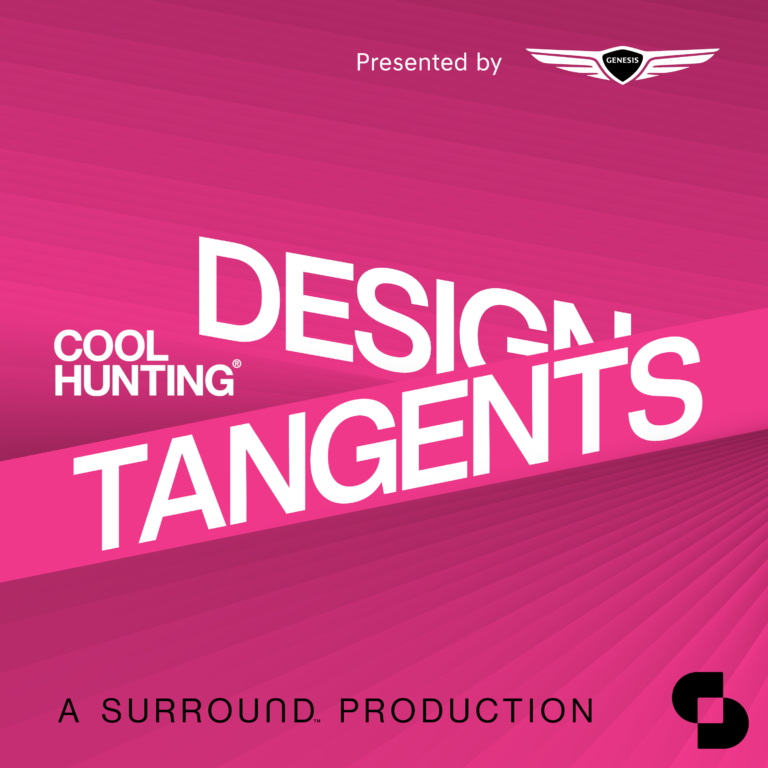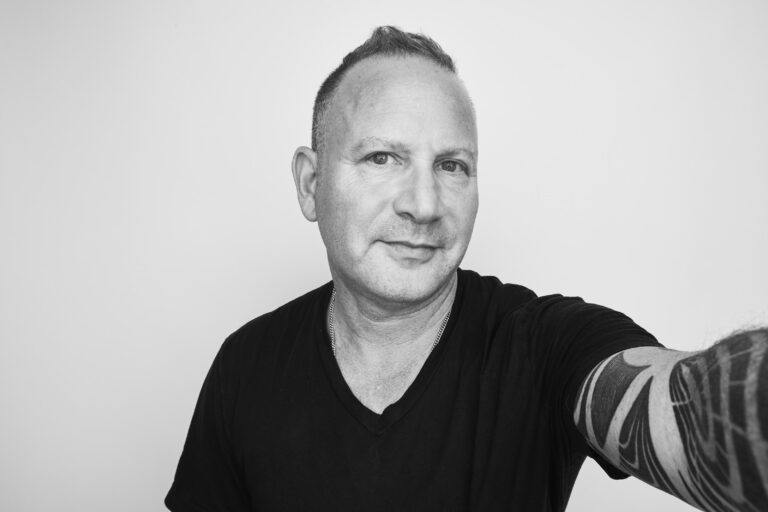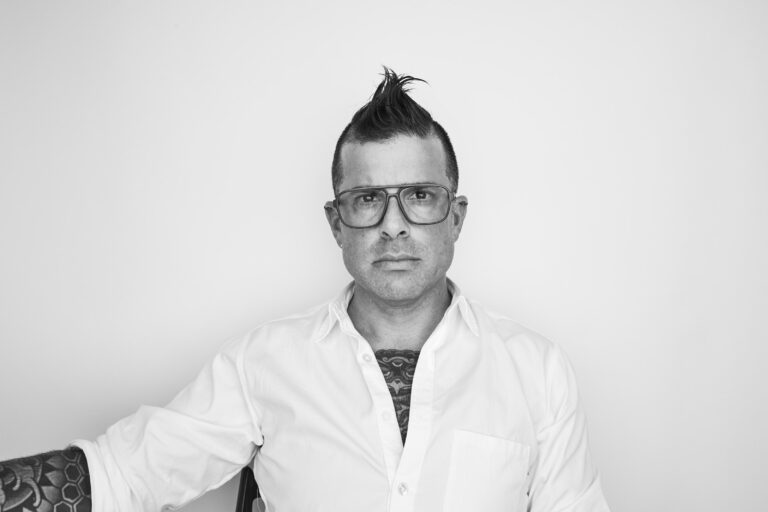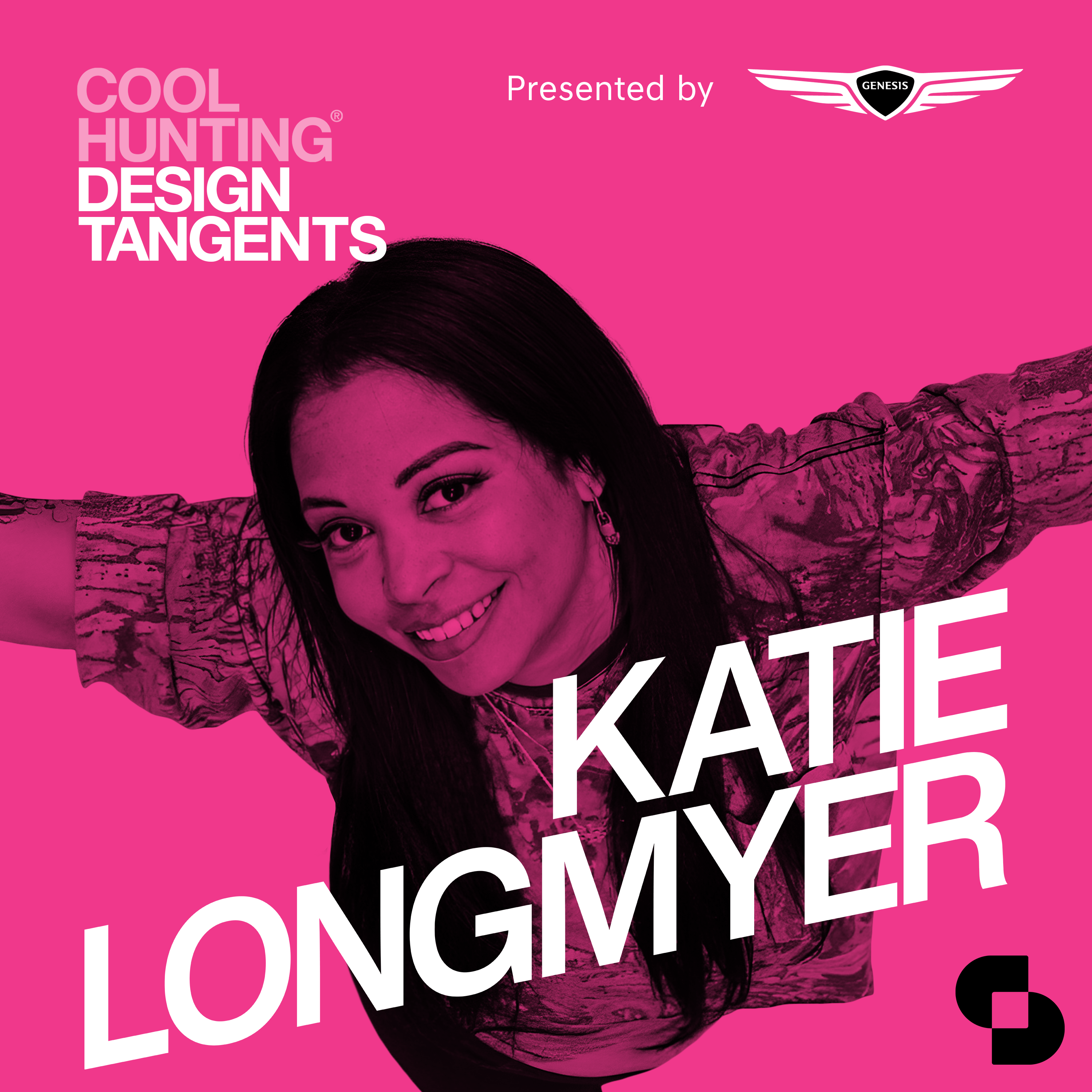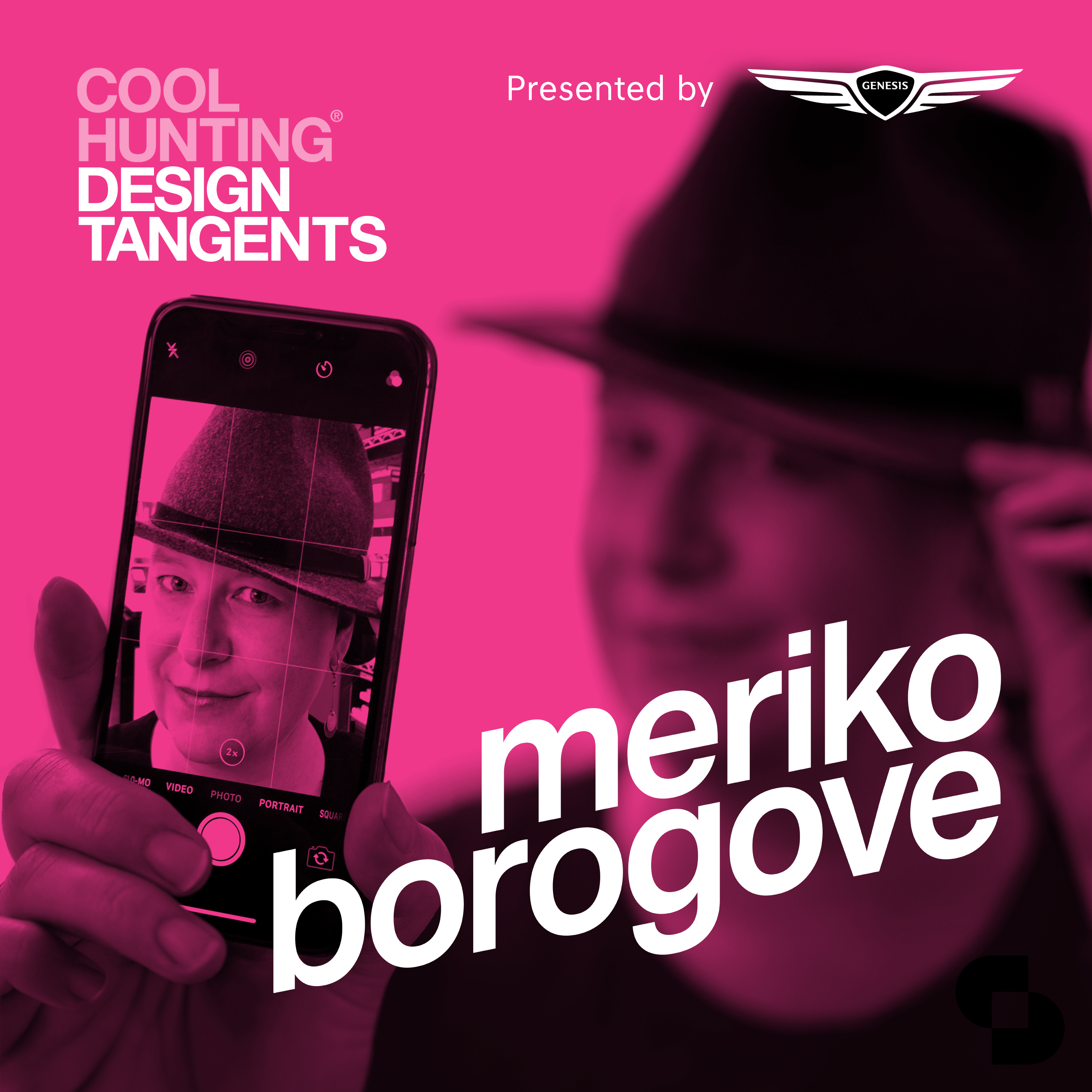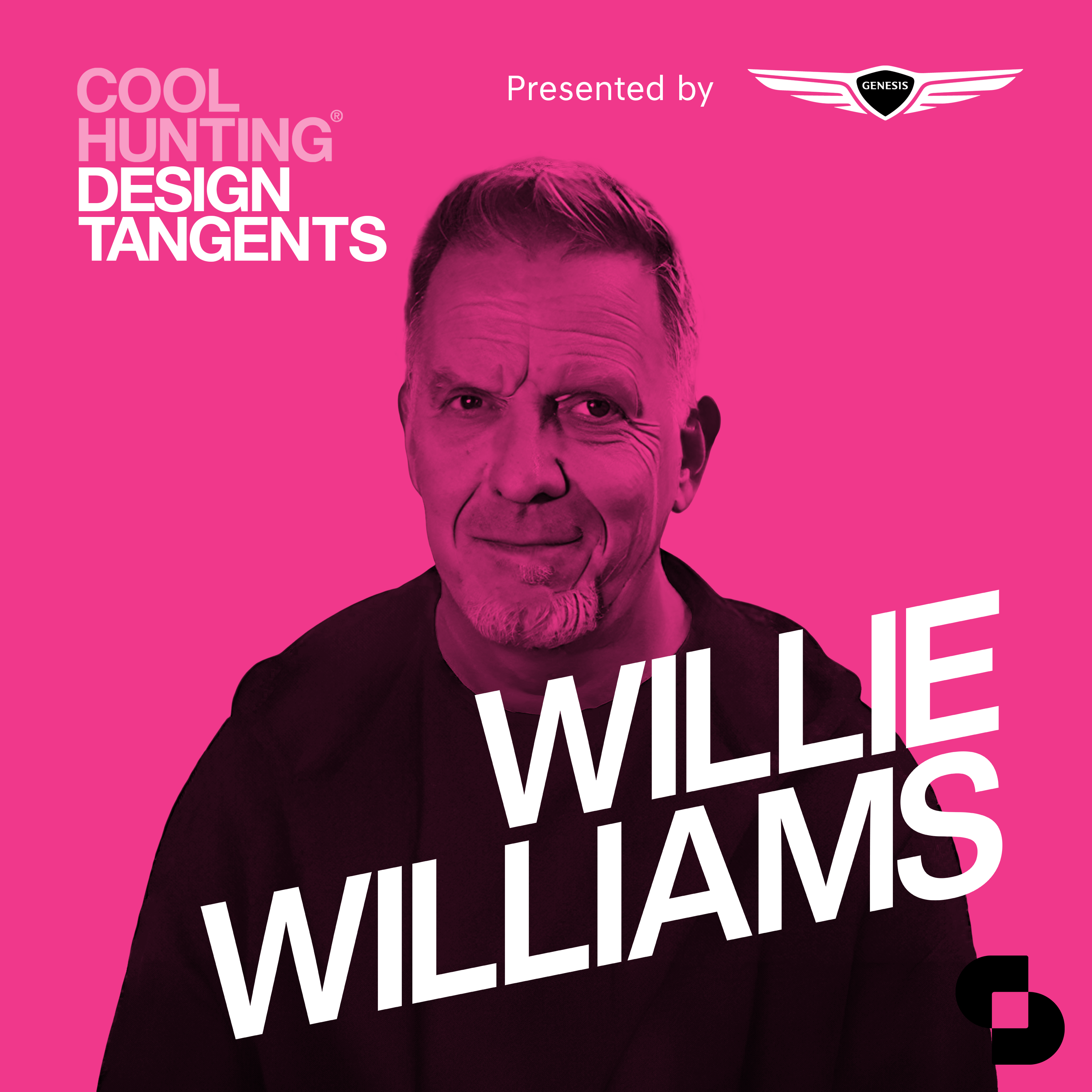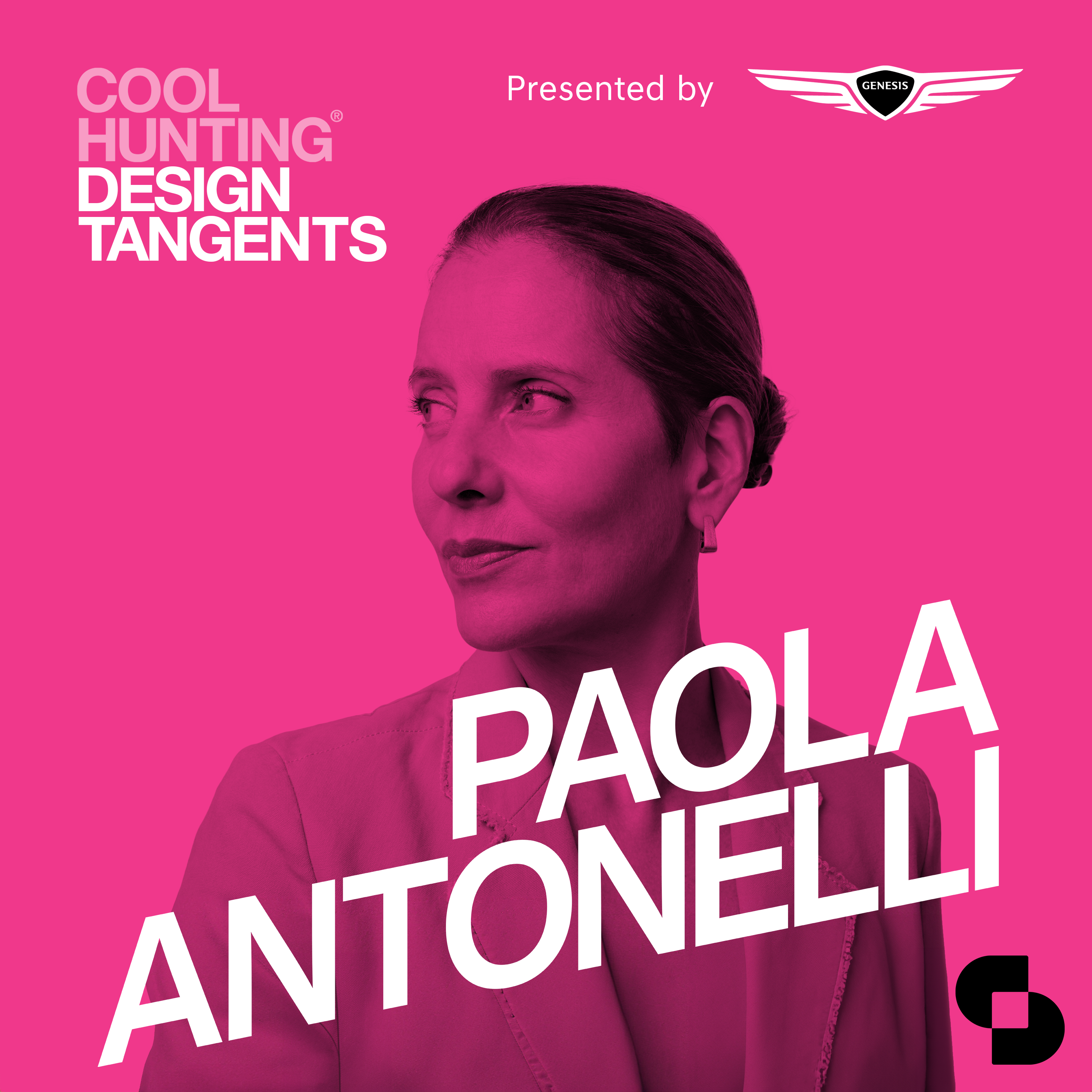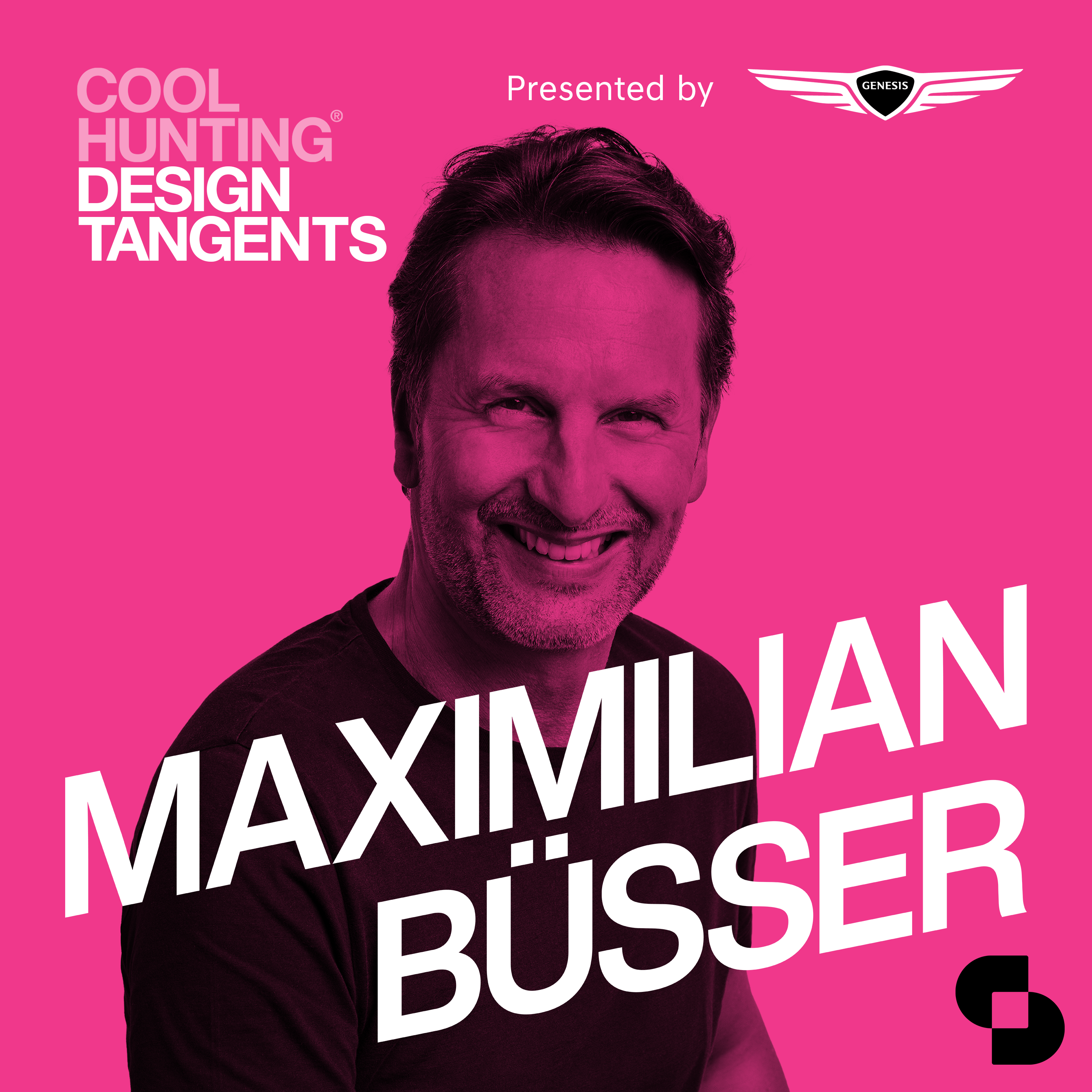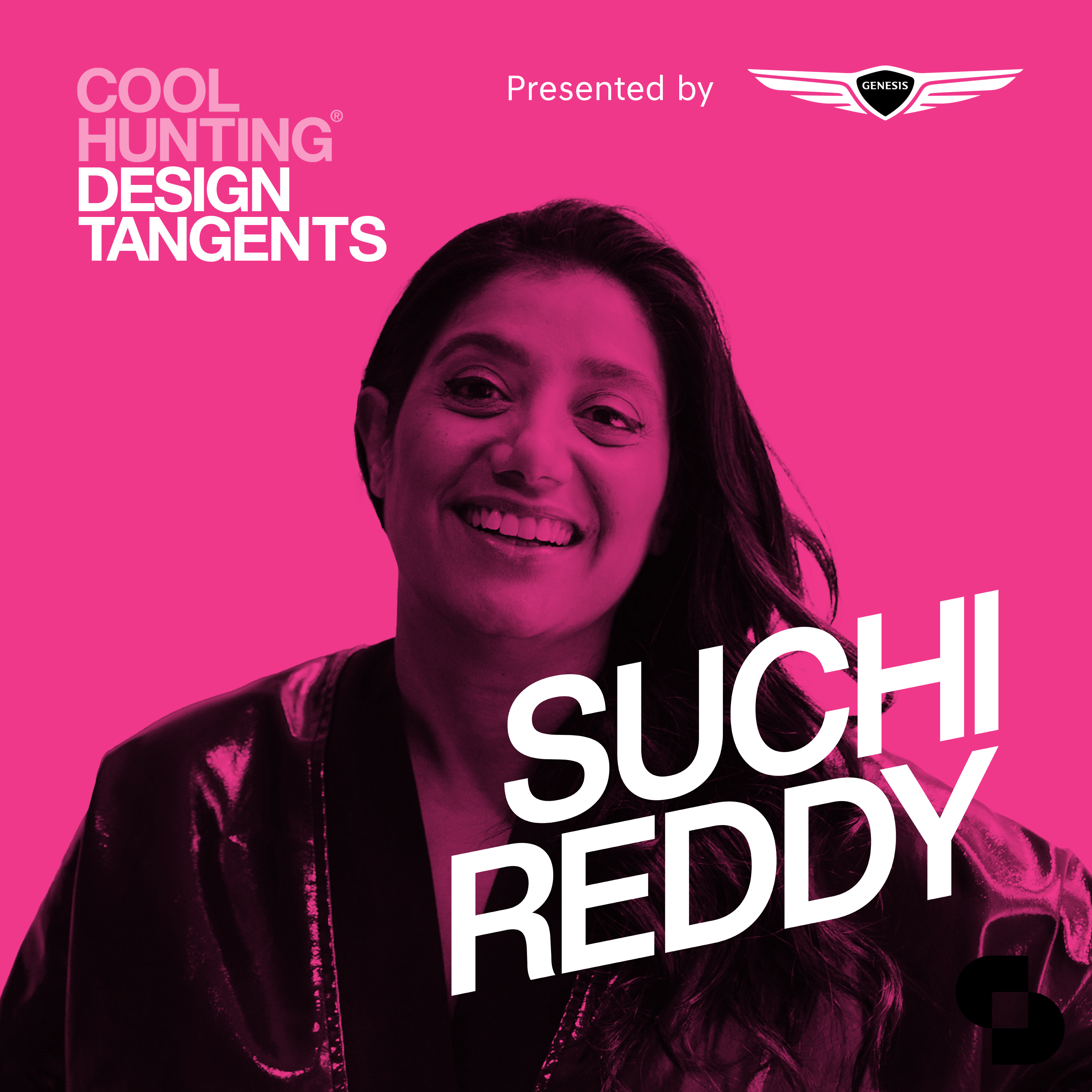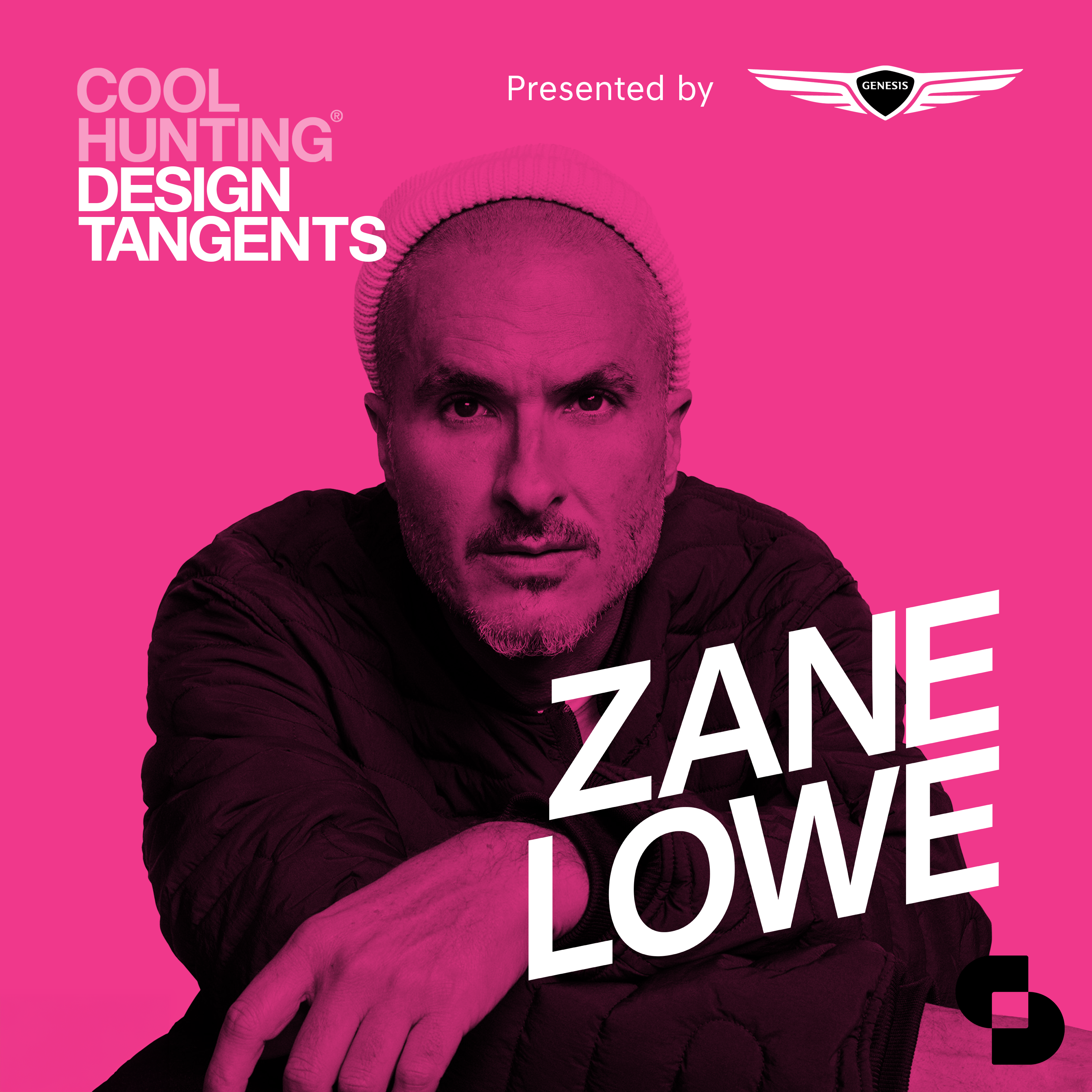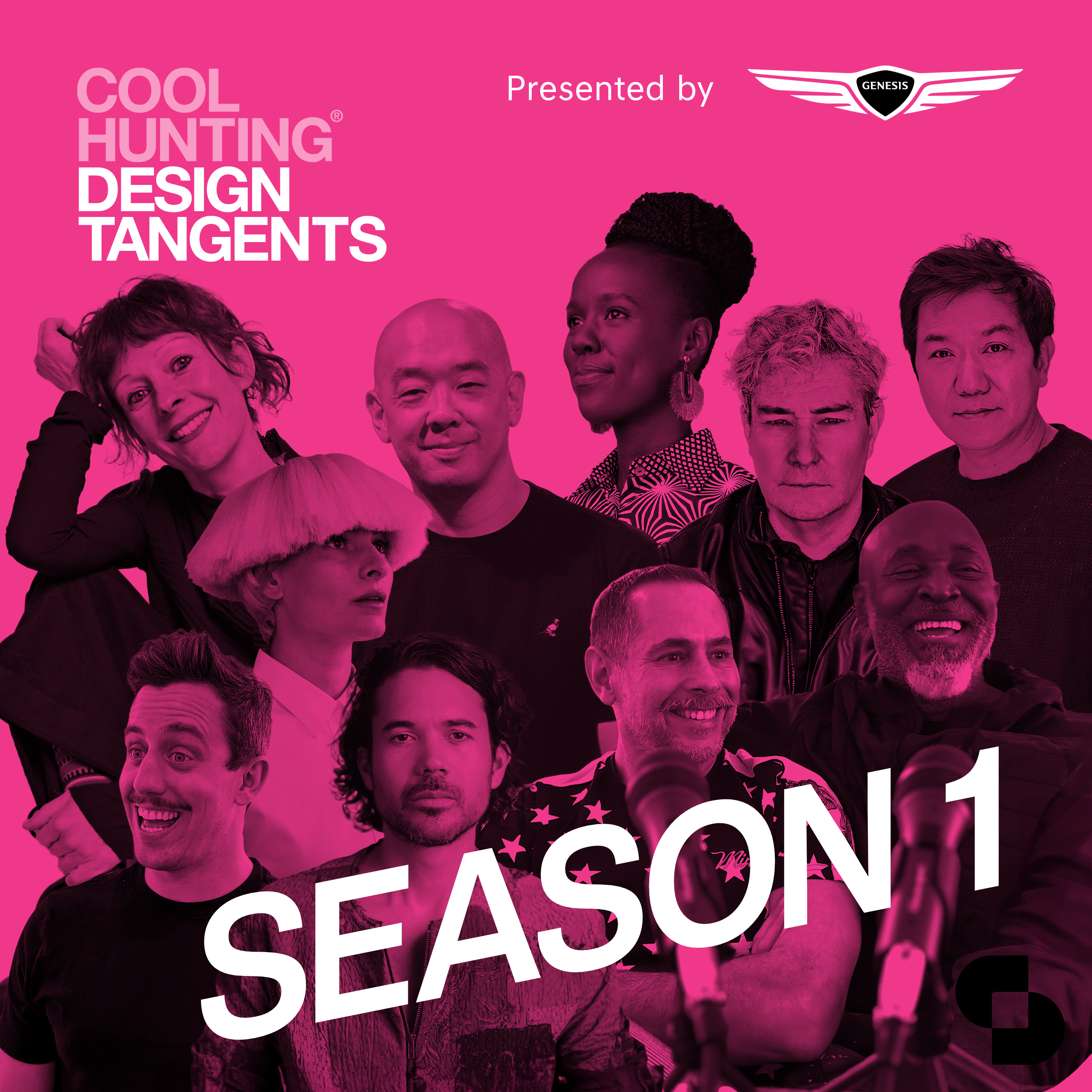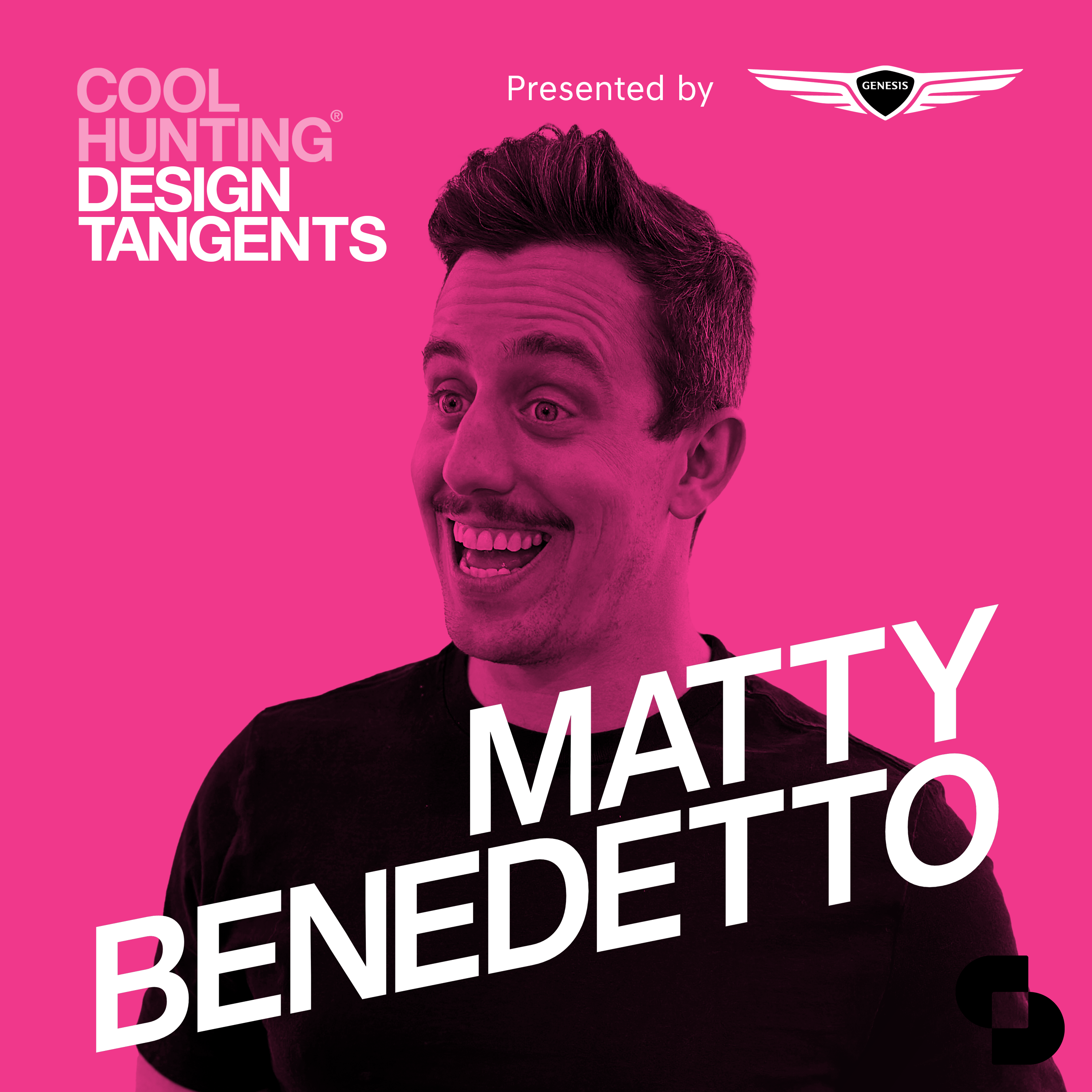Is it a vibe or is it a discipline? Designing streetwear requires understanding a far-reaching and often unexpected mix of cultural queues. For Jeff Staple, a pioneer in the space, synthesizing these observations is second nature. In this episode Josh and Evan talk to Jeff about his journey of discovering design, disappointing (and then impressing) his parents, mastering product collaborations and more. We also hear some key lessons along the way including a spot-on gumbo metaphor and recognizing the power of 17 year olds.
Links:
Jeff Staple: jeffstaple.tv
Reed Art Department (Creative Agency): reedartdepartment.com
Jeff Staple: Not Just Sneakers book with Rizzoli: reedartdepartment.com/shop?rizzoli-jeff-staple-not-just-sneakers
Social:
Although the transcription is largely accurate, in some cases it is incomplete or inaccurate due to inaudible passages or transcription errors.
[00:00:00] Jeff Staple: My name is Jeff Staple. I am the founder of a clothing brand that many people might call Street Wear. It’s called Staple. The Mascot and Icon for Staple is a pigeon. So if you’ve ever seen like a little pigeon or a big pigeon on clothing, uh, it’s probably coming
from us.
[00:00:25] Evan Orensten: Welcome to Design Tangents, a podcast that goes behind the scenes with creative change makers to learn about their work, inspiration, challenges, and philosophies.
[00:00:35] Josh Rubin: I’m Josh Rubin.
[00:00:36] Evan Orensten: I’m Evan Orensten.
[00:00:37] Josh Rubin: We’re the founders of Cool Hunting. In this episode, we’re talking to Jeff Staple, and yes, he’s one of the original forces behind the streetwear movement, but he also happens to be one of the nicest, hardworking, focused, thoughtful people we know.
[00:00:57] Evan Orensten: We get to learn about his origin story, his [00:01:00] education, how he disappointed, and then impressed his parents. All of his collaborations and the way he approaches them. And what’s really exciting is to learn how he’s taking all of that and applying it to the world of NFTs and Web three.
[00:01:14] Josh Rubin: I just love that he’s balanced this world of street and this commitment to being a good human.
We get to feel that in this episode.
[00:01:23] Evan Orensten: Let’s dig
into it.
[00:01:30] Josh Rubin: Jeff, great to see you,
[00:01:33] Jeff Staple: Josh. Evan, yes.
[00:01:36] Josh Rubin: It’s been a while.
[00:01:37] Jeff Staple: We’ve known each other for a while and it’s also been a while, so we go back, this is gonna be fun today.
[00:01:44] Josh Rubin: Yeah. We kinda
wanna just jump straight in. You know, you have this incredible sense of design and fashion and a pulse on what’s happening among a lot of different groups of people, but [00:02:00] especially the younger generation, especially people in cities.
Is that a
discipline or is it a vibe? Like, is it just like you just, you just know,
or do you study people?
[00:02:14] Jeff Staple: No, it’s, it’s not a discipline. It happens naturally, organically, and automatically. So even if I wasn’t making a living doing this, I would be interested in all of these same exact things. It’s, it’s a personal passion, which probably indirectly relates to.
Why I’m so good at these things is because I actually really enjoy and love these things. You know? So it’s, I I do think that like if you didn’t really organically love these things and you did act like a researcher and study them, you could get to like a certain level of knowledge and expertise on it, but you wouldn’t really be able to, like, as you said, vibe on it, you know?
So, um, I, I’m, I’m [00:03:00] happy that I’m in a industry, if you wanna call it that, where I get to make a living doing things that I’m just really passionate about.
[00:03:08] Evan Orensten: We spoke last week, Jeff, and you were at the Prada Foundation in Milan, and obviously you’re there looking for art. I’m imagining that you’re somewhat similar to Josh and me though.
When you’re, when you’re there in that situation, you’re of course looking at the art, you’re looking at the architecture, but you’re also looking at the people who are there and you’re seeing how they’re engaging with the art and the architecture, but you’re also kind of clocking. What are they wearing, what shoes they have, what watch they
got on, uh, what phone are they using?
[00:03:36] Jeff Staple: Oh my God. Yes, absolutely. I mean, that low key, that is actually 80% of what I’m looking at. To be honest. When I go to any sort of like museum or gallery, I’m looking at the people and how they’re reacting to the things that they’re seeing, not at the actual things on the wall. And, and like you said, that goes with what they’re wearing, you know, what device they’re using to capture it on what [00:04:00] app they’re using, on their device.
Like I’m just, I’m, uh, I’m just a real people person in the sense, you know, not a people person in the sense that like, I’m very, you know, sociable, but people, person in the sense that I like to see how humans react to things when you put things in front of them. I’m also really interested in, in kind of like tribes, And how many people go to like a museum alone versus in a pack of two or a pack of six and how they act differently when they do that as well.
So yeah, just always observing. I’m not there like taking notes either. Like I’m not like with a notepad observing like she’s wearing Air Force Ones with a Swatch. The observations just go into like, I often like to think of it as like a gumbo or like a minestrone stew in my like brain. And I’m not really so OCD about like, oh, I gotta remember that shade of fuchsia that she was wearing.
Like I just observe and let it all sink in. And I trust myself that [00:05:00] it’s being filed the way in the card catalog of my brain and that when it’s needed it will be retrieved. But I don’t obsess over like making sure that it’s being record kept forever either, you know? Cause I used to sort of be like that.
I used to be obsessive about. Taking photos, taking notes, filing them away in certain folders and everything to make sure that I didn’t lose all of these observations. And I think that’s natural when you’re younger and you kind of don’t have the faith or the trust in yourself to know that you’ll, you’ll be ready when the time is, is needed for that to come up.
I often create a lot of what I do to, to sports and athletics, but it’s kind of like when you’re training or in the gym versus being like in the game and on the field performing, if you obsess over, like, let’s say it’s tennis and you’re like, oh, I, I better make sure my continental grip and the thumb is like right there on that stitch in practice in, in the game.
If you’re [00:06:00] thinking about that, you’re not gonna play at your best. You just have to trust that you did it in the gym and trust that you’re gonna get the flow right when it’s time to perform. You know?
[00:06:10] Josh Rubin: From gumbo to tennis in, in one answer.
[00:06:14] Jeff Staple: There will be many analogies today. I love it.
[00:06:17] Evan Orensten: That’s good. I love it.
[00:06:18] Josh Rubin: Um, you kinda
converted your people, personness your observation, your, your curiosity about humans and human behavior.
You kind of converted that into a business
really early. Right? I think were, were you, were you 19 when you started?
[00:06:39] Jeff Staple: When I started my company, it was, uh, I was 22. It was 1997.
[00:06:44] Josh Rubin: Got it. Yeah. Cool. Did you know out of the gate that this talent,
this skill that you had was something you could actually convert
to a, a career to a
business?
Or was it a little bit of a like, well, lemme just try it and see what happens?
[00:06:59] Jeff Staple: That would be a. [00:07:00] fuck, no. if I knew this was going to be a career if you go back to, you know, as I mentioned, 1997, um, and that’s when like the company was formed. So I was noodling many years before that, you know, um, I would, I would probably say 95 is when I was like, sort of thinking about could this be something prior to 95? It was just hobby and interest purely.
Um, so if you think about it from 95, you’re looking at the mid nineties in, in New York City. I had just transferred from New York University studying journalism to Parson School of Design to study communication design. But geographically, if you look at that pocket, you’re looking at Washington Square Park to Union Square in New York City in the mid nineties, right?
So having that energy as my backdrop was on the one hand incredible. But on the other hand, as you guys know, [00:08:00] Like there was no industry for like sneaker culture or street culture. Like you look at a skateboarder at Washington Square Park back then and you’re like, you could be a multimillionaire skateboarder.
He would’ve smacked you across the face with a skateboard. You know what I mean? It was so premature, that era. So the idea that like our kid could silk screen t-shirts and like make a, any kind of a living, I’m not even talking about. I’m talking about like, you might make more of a living delivering pizzas than silk screening t-shirts back then, you know, having, having a brand.
Um, so definitely there was no inkling of, um, that this was gonna be a thing that I could actually live and do. It was what young people do in, in New York City, just like, fuck around Rebel, try to express themselves in a way that is not lame and wack in their mind. Um, and just try to do something different, you know?
Um, so that’s what I was trying to do, uh, at, at that time [00:09:00] for sure. Uh, it’s, and you know, even to this day, I would say, and this is the 25th anniversary of Staple, maybe only in the last couple of years, am I like, you know what? I know what I’m doing. I think I know what I’m doing now. Like that’s how long it took.
[00:09:19] Evan Orensten: I think we feel so similarly,
you know, we were in the same place at the same time, but doing different things. Right? So we were in this crazy internet one startup time. Yeah. During that moment. Um, very adjacent to that. Seeing all of that. That was a huge part of the culture of New York in particular at that moment.
And our focus was, you know, on tech and, and doing that, all that stuff that we did back then. But there’s, there’s so many analogs.
[00:09:47] Jeff Staple: What was the founding year of cool hunting?
[00:09:49] Josh Rubin: Well, cool hunting started in 2003. In February, 2003. Evan and I met in 99. Um, I had just finished grad school at NYU and [00:10:00] Evan had already been at Razorfish for a while.
Um, cuz he helped start that company in the mid
nineties. And it, you know, it was still web one and it was still that. Um, you know, even in 99 it still was a very similar energy to what you’re describing, uh, from, you know, from mid nineties it was starting to shift because there was this new, there was this excitement.
There was this, this
like amplification coming from the tech world looking at how, you know, everything
that we know suddenly could have a digital layer to it and what might that look like. And no one necessarily had the answers, but we had all these new questions.
[00:10:39] Jeff Staple: Yeah.
[00:10:40] Evan Orensten: And a lot of very curious people around us.
But I, I wanna dig into something that you said, which is, you know, you’ve been doing what you do for a long time and now you’re starting to feel comfortable and, and skilled and, and honestly
talented at what you do. And Josh and I talk about this all the time. Cause I think if you asked us five years ago, 10 years ago, 20 years ago, what we do, [00:11:00] that answer always changes.
And where we’ve kind of gotten to when people ask us is we say mostly like we’re really good at pattern recognition, right? What we have developed over 20 years of doing cool hunting is being able to look at different places, people, activities, categories, and start to see things as we’ve built and built and built upon that, we started noticing where those things intersect.
So following the world of fashion, how does that connect to art? Following those two things, how does that connect to music? How does that connect to different kinds of design, interior design, architecture,
[00:11:39] Jeff Staple: automobiles? And it’s
[00:11:41] Evan Orensten: finding those little, you know, threads between them that we’ve realized were really good at doing.
But if you asked me even five years ago, I probably wouldn’t have thought of that. It’s really Yeah. Sunk in to the point where I think that’s what we do is we identify these [00:12:00] observations in ways that maybe other people, they’re too subtle maybe for other people to determine and they don’t have the exposure that we do to that volume of things over a long period of time to build up that
reference library that you mentioned.
[00:12:11] Jeff Staple: Yeah, I mean, the only way that you can really get to that point where you can start seeing the patterns and, you know, connecting these dots is by first amassing all of the, the data into your head. And, and I’ll tell you like the sort of like sneakerhead analogy version of that. The only way that you can understand the difference between.
An Air Force one that’s made in China, or Vietnam or Korea, or a bootleg or an Air Force, one that’s been designed by Virgil Ablo versus somebody else is to first amass dozens, if not hundreds of pairs of Air Force ones. Understand what thes are like, understand what happens when you open a box to then pick up a shoe and be like, this [00:13:00] one’s probably from the mid two thousands made in Korea before they move their manufacturing over to China.
You know, like that level of connoisseur requires you to like see all of this stuff first.
[00:13:12] Josh Rubin: Yeah, it’s a, it’s a really good point.
[00:13:14] Jeff Staple: Can you be a wine connoisseur having only tasted one glass of wine? You can study it, but like, until you actually swirl the wine and drink many of them from different countries.
Like, can you really call yourself a, a connoisseur? You could be a student, you could be a red expert, but I think what we do is. We are out here in these streets. You know what I mean? That’s why I still call it street wear like and street culture. It’s not necessarily because it comes from like skateboarding or punk or graffiti, which come from the streets, but it’s actually because people like us care about the data and the analytics and the academia of it.
At least I do. I do understand that like these things come from a learned place, [00:14:00] but I think without the application in the streets, I’m using air quotes with real people interacting with them. It doesn’t matter. It doesn’t carry that weight, you know? Um, like for instance, uh, in, in college I was a huge typography nerd.
You know, I was like so crazy into typography. Both the early typographers to the modern typographers and just understanding all of like, you know, negative space and serifs and sans serifs and weights and counterbalances and everything like that. But when you see. Type and fonts in a subway or on the side of a bodega.
Like it carries different meaning and, and purpose. You know, it’s one thing to draw an amazing font in a, in a type lab. It’s another thing for it to be like the bodega owner using that, like on the side of his, his shop, the, the reference and the context changes, which that’s the validating point to me, is when it’s [00:15:00] actually used in real life.
[00:15:02] Josh Rubin: Just sticking with college for a second, you mentioned that you switched from journalism to communication design. I knew the comms design side of your education. I didn’t know that you started in journalism. Uh, what prompted the switch? Was it fonts? What did fonts make you switch? Like the writing and obsessing over the words you were
seeing?
[00:15:19] Jeff Staple: No, no. The, the, the switch was prompted because of work. You know, um, when I was going to NYU, I had so many random part-time jobs all the time. Um, I swept hair at a high end Fifth Avenue hair salon. Uh, I delivered pizzas, I bussed tables at a Chinese restaurant. I worked at Paragon Sporting Goods. Like, just basically there was no context for what I wanted to do other than will this person pay me 25 cents more per hour than the previous person?
If they do, I will take that job. You know? And I didn’t care what it was, which I personally love. Cause I, I think it’s important that people sort of sample all different [00:16:00] stuff. And if, whatever the motivator is a bit, for me, it happened to be just like hourly salary, then I was gonna do it. Um, I finally ended up landing a job that paid crazy money, crazy, crazy money.
And I’m talking like $9 and 75 cents an hour. Like back then in the, like, in the, in the nineties, $9.75. What are they? Crazy. You know? And, um, I didn’t even know what this. Was, but it was known as a desktop publishing graphic design firm in Soho. No idea what desktop publishing was, right? But they paid $9.75 and it was a data entry clerk.
It’s a glorified way of saying I the calls and I type in what people say and relay the message to whoever needs to get it. That was data entry. And so, uh, I entered through the, for the job, it was a great location, Broadway and um, Broadway in Houston. Um, so it was really convenient for me to get to class and stuff.
And I was still gonna NYU at the time. And so I’m sitting here and [00:17:00] I’m watching, I’m just looking around the office. It was a small boutique office. Um, and I’m looking at these people just taking words and pictures and moving them around their screen and like, they were getting paid to do this. And I was like, what is this weird job?
You know? And that’s when I learned about graphic design. And I remember a funny story was, um, You know, I was, I was thinking when I do data entering, like relaying messages, I would do this using Microsoft Office, like Excel Word, you know, stuff like that. They had me doing it in a program called Quark Express, if anyone remembers Quark Express, which is the pre
[00:17:38] Evan Orensten: All too well
[00:17:39] Jeff Staple: Pre INdesign,
[00:17:40] Evan Orensten: yeah.
[00:17:41] Jeff Staple: And so I was like, why are you gonna have me just type messages and mailing labels in this program that I gotta learn? Right? But they taught it to me and then from Cork, they taught me Illustrator and it taught me Photoshop. And before I knew it, I got really good at it. And so I was inadvertently learning like sort of the baselines of graphic [00:18:00] design from the program side, but also observing what these people were doing.
And soon after I was like, I wanna do this. This is so cool. This is like, you know, what they’re doing is so amazing. And at the time when I went back to NYU to try to take some classes, they offer no graphic design classes back then. You know, I think they, they do have a program, a really strong program now, but back then they didn’t.
And that was really frustrating for me because I was paying very high tuition and not getting the thing that I wanted to get, you know. Um, and then so I explored Parsons and then, uh, really made the big life gamble. Um, and I don’t use that word, um, lightly, but I made the gamble to leave NYU. Have pretty much none of those credits apply to Parsons and start all over again in my foundation year as a freshman in Parson School of Design.
So those two years at nyu, I essentially dropped out, it was useless, and then went to [00:19:00] Parsons, um, to pursue this new career choice. And as you can imagine from my Chinese immigrant parents, first of all, just journalism already was like, wait, you’re not going into accounting, law, or like medicine. And I, you know, like, so already journalism was like a miss.
But then leaving NYU to then go to art school was not an easy conversation between my mother and I.
[00:19:24] Evan Orensten: How’s your mom feel about it today?
[00:19:26] Jeff Staple: Today. She’s extremely proud of me. But it took a long time to get there because, uh, I mean, if you fast forward two more years, I ended up dropping out Parsons too. So I’m a, I’m a rare double dropout with no degree to show for it.
Um, and dropping out of art school was a real rift in my whole family, to be honest. You know, I’m, I’m an only child. I was, uh, I’m the first one born in America, first one to graduate high school, first one to go to a college. And, you know, uh, if you guys know in, [00:20:00] in Asian culture, like when you’re the only male child, there’s a lot of responsibility on you.
You know? And here I am dropping out of art school and they’re just like, man, where did we go wrong?
[00:20:19] Break 1
[00:20:19] Josh Rubin: Is there a timeline intersection between when your mom became really proud of you and when you started to feel like you knew what you were doing?
[00:20:27] Jeff Staple: Pretty close. Closer than you would think. I mean, there good. Um, you know, so give you some time stamps, 93-95 was NYU, to 95 was to 97 was Parsons, um, started Staple in 1997. I would say. There was at least a decade, 10 years of pretty much no conversation with my father and a lot of misunderstanding and, um, not [00:21:00] knowing what the, I was doing for my mother for a long time. There was a point where Time Magazine, China wrote an article about me and that’s when they were like, oh, wow, you’re not.
A complete knucklehead, like you’re actually doing something legit.
[00:21:17] Josh Rubin: Yeah. It’s, it’s always the, the print media that gets the parents, it seems.
[00:21:22] Jeff Staple: Yes, yes. That’s why you still need the New York Times magazine.
[00:21:26] Josh Rubin: Totally.
[00:21:27] Jeff Staple: New York Times should be like, instead of all the news, that’s, it should be like, we’re here to make your parents proud.
[00:21:36] Evan Orensten: It’s really true. Um,
Jeff, I wanna bring up something you mentioned a little bit ago, cause you opened the door to this, um, you mentioned Nike, and I know they’re long term collaborating partner of yours. We think you do a lot of things really well, but collaborations, um, you, you’re kind of our role model for how to do collaborations and do them really well.
And I don’t wanna say it all started with Nike, but there was a lot of attention around that when you first started. [00:22:00] Can you tell us a little bit about Nike and, and how
that’s been part of your life?
[00:22:04] Jeff Staple: Nike’s been part of my life since I was sixth grade. Whether they like it or not, they’re part of my life.
Um, so I, I’ve been just a sneakerhead from as long as I can remember. But in terms of working with them, it was actually a really, um, interesting way that I got into the Beaverton door, as they say. Um, I mean, I I also wanna start off by saying like, the ability to work with Nike at like as a teenager is an unfathomable dream.
You know, to even go to headquarters was like, that’s like OZ. You just, you don’t get to go there, no one gets to go. Um, and I, I would, I remember even just going to a Nike town, like the retail store was like the Mecca. Like, it was like, oh, I’m here at the Nike town, you know, so I couldn’t even dream of the scenario to, to do something with Nike because this is.
Street [00:23:00] wear fashion collaborations. No one does stuff with Nike unless you’re an athlete or you’re a trained footwear designer and you have a job at Nike, right? That’s the only way you get to design shoes. I was at this time, um, I had staple the, the very small clothing line, and then I was doing a lot of freelance projects with different, um, you.
I would call them clients, but I was really just a one man show doing different design jobs. And one of them was, uh, I was the art director for The Fader Magazine and The Fader Magazine back then in the early two was a really important publication because it was one of the first ones that melded hip hop, electronic music, fashion, and sports and gaming.
Like basically what every publication does today, they were doing it in print and maybe one of the first ones to ever do it. And I was using my newly found communication design, graphic design skills to, to art direct The Fader magazine. But because I had the [00:24:00] journalism background as well from NYU, I would be invited every once in a while to contribute an article here or there, you know, for, for a feature.
And then, um, wow, I’m actually, this is the first time I’m actually observing all of this. Uh, but I, you know, being that I was a sneaker head, I was noticing that in New York City at this time, this is now 98, 99, that a couple of handful of people would go to different regions, whether it’s Baltimore, Philadelphia, London, Berlin, or Tokyo, and buy shoes, whatever they can fit in their luggage, bring it back to New York and resell them.
Okay. For a premium 10, 20, 30% more. Right. So it’s like an Air Force One that was only available in London. You bring it back here and then you sell it for like $120. Right. Um, hence resellers and reselling as an industry now, but that they were reselling shoes that they were buying in [00:25:00] foreign countries, and I was.
Nike is smart enough to know that this is happening. So why are they A, allowing it to happen? And B, why aren’t they being proactive about it? Like if they know this shoe is, is highly in demand from London and New York, why don’t they just release it in New York? Like, I had all these questions as a sneaker head.
So I proposed the story to the publishers of The Fader, and this was particularly happening in Tokyo. So I said, uh, Rob Stone and, and John Cohen are the founders of the Fade. And I was like, John and Rob, I think you should send me to Tokyo so I can research and find out from Nike, Japan why this is happening.
And, and if you’re releasing these shoes in, in, in limited quantity in Tokyo, why don’t you just release ’em all over the world? Right? You’re a billion dollar company. And they were like, that’s a pretty good story. Go ahead, do it. So I was like, holy shit, I’m going. to Tokyo!
You know? So here I’m I, I take like five copies of the [00:26:00] fade with me to Japan.
I hit the ground running and I have no leads, no contacts whatsoever. I’m literally walking into sneaker stores saying, who sells you? Nikes? I wanna talk to that person. And I just work my way up the, the, the chain like an investigator would. And I finally got to the person at Nike Japan headquarters who determines which shoes to put out in limited quantities, in limited colorways, and which stores to put them in.
Okay. And his name is Marcus. And so I finally met with him and I interviewed him. And along the way I interviewed all these other amazing people for this issue too. And what’s really cool before I go on is basically, this is the thing that I just noticed now is I had graphic design, you know, communication design.
I had, um, sneaker culture and I had journalism. And I was triangulating my strengths almost into like a mini superpower. But I’m just noticing now that [00:27:00] I was like, oh, I can write, I can do design and I’m a sneakerhead. Let me just like tie all these things into a bow and like figure out what to do with it.
You know? And I don’t think young people today do that enough. I think they still think in silos like, what is the one thing I need to, they’re like, no, take all the things and, and just like Frankenstein them together and create your own lane.
[00:27:22] Evan Orensten: There’s the gumbo again.
[00:27:23] Jeff Staple: It’s the gumbo. Exactly. Yeah. So I’m in Japan.
I managed to, to get this interview with Marcus. And Marcus was the guy that was like, after the interview was done, he was like, so wait, you’ve got this like, you know, cool little t-shirt line you’re selling in some boutiques. You’re a sneaker connoisseur. You know what you’re talking about with sneakers and you’re like writing and you’re designing.
He was like, we need to be working together. And I was like, what? He’s like, yeah, like, we need to get you with people in Beaverton to like figure out what we can do together. And I was like, hell, fuck yes. You know? And so that’s [00:28:00] where the door to Beaverton sort of like creeped open for me, um, before I bum rushed it open and, and started doing stuff with them.
But that’s how, that’s how the Nike relationship started.
[00:28:10] Evan Orensten: I love that everything that you just talked about showed up. Am I right that the first project you did was the navigation pack with Nike?
[00:28:19] Jeff Staple: The relationship actually started with a lot of like, Can you help us with our annual report layout? . Or Mark Parker is coming to visit New York.
Can you help us outfit the conference room? So it looks really impressive to Mark Parker when he comes. You know, I remember of early ones was like, Kid Robot and Barney’s did a collaboration on Air Max One, and they asked me to design the packaging for it. So I did the, the box design for it. So it was a lot of like that type of stuff before they said, Hey, why don’t we do a shoe with you?
And I think the first shoe was actually a Cortez and a Rift, you know, the split toe Rift? Yeah. So it was that, [00:29:00] it was a, I think if you Google it, it’s, it’s called the Nike Laser Tattoo Pack. And then, . Um, Nike Cortez had Rift. That was the first one. I think navigation came soon after. And then the Nordic pack came after that.
Um, and then of course the Pigeon Dunk, uh, soon after that.
[00:29:17] Evan Orensten: Of course. Yeah. Yeah.
Well, I thought was interesting cause the navigation pack talks about, right? You’re using tech, you’re using lasers to
very early on to, uh, sketch things onto, or imprint things into
the shoes, to the, the fabric of the shoes, the leather of the shoes.
And you also tied that to different cities. Some of what you were talking about, about here’s different cities where different things are happening. You’ve got technology, you’ve got design, you’ve got all this and all this comes together in ways. Maybe you didn’t even, you weren’t even thinking about
[00:29:50] Jeff Staple: great observation.
[00:29:51] Evan Orensten: But as we’re talking about it now, it’s like, hey, all these things were in your gumbo, in your brain.
[00:29:57] Jeff Staple: That same theory of why I even [00:30:00] asked to go to Japan, this idea of like cross-border reselling. Was also my own design brief to myself for the navigation pack, which was based on, um, London, Tokyo, and New York as, as I was seeing it.
These sort of like epicenters of, of where like the sneaker trading was happening. Um, that’s why I picked those three cities. So it was like sort of the same gumbo again, but then applied to this opportunity of being able to do something with Nike. Um, and yeah, you mentioned the laser technology, which was amazing.
At that time, the laser technology, which was used to like put art on, but also perforate and fold leather really well, was only used in a, in a one of one art manner. Um, I don’t know if you guys remember the 2 55 Elizabeth Street space, which was like the first energy center of Nike. Yeah. So only only products that 2 55 Elizabeth Street sold had laser on it.[00:31:00]
They actually came to me and said, okay, so Jeff, you’ve seen this laser thing. Let’s do something that is available globally using the laser now. And so that navigation pack was the first time laser was used on a worldwide level.
[00:31:13] Josh Rubin: You talked about the moment in time when product had a lot of variation. Regionally. I loved that moment because as travelers we got to find things that were unique to the places we would visit.
And that’s still the quest. That’s still, when we travel, we’re still looking for things which are unique to the places we’re visiting. You know, increasingly it’s, it’s about finding solo makers that are in different parts of the world that are the only one doing what they do. I don’t remember the last time I walked into a sneaker store anywhere in the world and saw something which was unique to that region.
[00:31:49] Jeff Staple: No.
[00:31:50] Josh Rubin: And so
thinking back to that moment when you were,
you know, when you were saying, oh, well, why isn’t Nike importing these
Tokyo drops, these London drops and bringing them to [00:32:00] New York because the New Yorkers
want them.
I was one of those New Yorkers that wanted them for sure. But, um, now
I guess I got what I asked for.
[00:32:10] Jeff Staple: Well, yeah, it ruined, it ruined it, it really
ruined it.
[00:32:13] Josh Rubin: I guess the question is it your fault, Jeff? That’s the question. Is it your fault
you do this?
[00:32:18] Jeff Staple: It’s, it’s a pendulum swing, right? Like, I think now that, you know, unfortunately Nike and the rest of them realize that like, instead of thinking of the world in silos, like.
Let’s think of them demographically like this. So like soccer moms, club kids, skateboarders all across the world, right? So like if there is a, a chain of stores or a group of like these 1000 stores that cater to soccer moms, let’s create a product that just hits all of ’em. So to your point, Josh, now when you’re in Copenhagen, Berlin, Shanghai or Melbourne, you’re seeing the same [00:33:00] shoes all over the place.
You know? Cause they don’t think of it regionally anymore. And the reason why I say it’s a pendulum swing is because I do believe that they are recognizing the mundaneness of this. And I think that sneaker companies and fashion, fashion brands are looking more regionally. Again, just to add that sort of like, um, specialness, you know, because frankly speaking, there is still, I mean, even though we are quite homogenized now cause of the internet and social media, if something pops off in Chengdu, China and it’s like bubbling literally in about six hours, it’ll be bubbling in New York.
Like that’s how long it takes now, where previously that might have taken three years. I still believe that when you take the time and explore and go out to these like nooks and cranny pockets of like different neighborhoods and different areas in the world, there is a vibe and a spirit that exists there that cannot [00:34:00] be translated through social media and an app.
And you can create really interesting product that touches only that subset or that city, which is why, you know, not to digress here, but like why foodie culture is such a thing. Because food is the one thing that you cannot consume, no pun intended, through a social media app. So if you want to try Noma, if you wanna try Narisawa, you have to hop on a plane and go there and get the reservation and, and experience it.
And that’s why like food is, to me, like the last bastion of sort of like where social media hasn’t touched it other than the selfie pic and like the food pic. But like if you wanna actually enjoy, you gotta get on a plane, go there.
[00:34:44] Josh Rubin: What’s
the last amazing meal you
had and where? Uh, it was in that focaccia sandwich spot in Milan.
It’s like a real dive hole in the wall. It’s a really long Italian word that I’m not gonna try to butcher. It starts with a [00:35:00] l l, um, but they make these focaccia sandwiches with either like, you know, mortadella or prosciutto or, or um, Bresaola. Uh, and it’s just amazing. It costs like six euros, you know? It’s just, it’s great.
[00:35:13] Evan Orensten: And we were talking about this,
like how we miss these places. Up you go. Tokyo Hands is, is one of those iconic stores that’s so unique. What are some of your places that you love to go? You were just in
Milan. Is there somewhere you hit up that’s obscure? What are the ones that you think about? I can’t wait to go to Tokyo or this place to go to that store.
[00:35:32] Jeff Staple: Here’s the, here’s the double-edged sword, right? Like when we go to a place and we discover it and then we. Tell our friends or put it on social media that like, we’re at this amazing place, we kind of inherently ruin place all at the same time. Right. So,
[00:35:50] Evan Orensten: yep.
[00:35:51] Jeff Staple: It, it’s, it’s a little bit like, but you know, I also don’t wanna be like, I wanna share at the same time as well, you know, so like, I don’t wanna be totally secretive about it.
But yeah, there was [00:36:00] something, there’s, there’s something really special about, uh, and you know, it’s not even about exclusivity. A lot of these like hole on the wall places, you know, or mom and pop shops or independent retailers, they couldn’t handle it. If 200 people lined up in front of their door, it would, it would ruin it for the owners and then it would conversely ruin it for the customers who wanted to go experience it, you know?
So it’s this weird double-edged sword where like they can only exist for like their eight. People. And, and that’s it, you know, just because it’s top of mind. Like I recently went to, uh, I was in Milan and I went to 10 Corso Como, which is still doing just that like collette level retail curation. Um, and the customer service was still amazing.
They still cared. You know, I mean, that’s, that’s the thing that’s also really hard if you’re, if you’re a retail shop and if 80, 90% of your business is coming through e-com, [00:37:00] honestly, why would you invest in amazing retail representatives in store, like in the store? Like, it almost makes no sense to. But I’m so happy that, you know, certain retailers like 10 Corso Como and almost every retailer in Japan still feels like, you know, the customer service experience in real life is so important.
Even though most of our business is done with add to cart click to buy overnight shipping nowadays. You know?
[00:37:29] Evan Orensten: Did you buy anything?
[00:37:31] Jeff Staple: Oh, I bought way too much there. I bought, so I bought so much that I had to go to a DHL to spend more money to spend to ship it all. Back.
[00:37:49] Break 2
[00:37:49] Evan Orensten: While we were talking
about collaborations, uh, we talked about Nike, which was some of your earliest. And one of your latest is I think a brilliantly done one, [00:38:00] uh, which is with Tumi. We were just back from Europe and we saw it. It’s everywhere. We saw it in London. We saw it in Paris.
[00:38:05] Jeff Staple: Yeah. So proud of that one.
[00:38:08] Evan Orensten: Thank you. You may not even know that you sent me,
um, a ping pong paddle carrier.
[00:38:13] Jeff Staple: Yeah, of course. Yeah.
[00:38:14] Evan Orensten: Very excited about that. And that was to me, like one of the most exciting parts of the collection. It’s kinda obvious that you’re gonna do a backpack of some sort and a tote or whatever,
but I, I was not expecting to see a ping pong case.
Ping pong pal case.
[00:38:28] Jeff Staple: Yeah.
[00:38:29] Evan Orensten: How’d that come about?
[00:38:30] Jeff Staple: TUMI, it’s just one of those great brands that I grew up with. And when I say grew up with, I don’t mean grew up owning. I grew up like wanting, but never being able to actually afford to me when I was growing up. You know, I, um, I grew up in New Jersey and I remember at the East Brunswick Mall there was a Macy’s there that carried like the standard black to me attache case.
Um, and I just remember when I started to. Go on job interviews in college. I was like, I [00:39:00] wish I was the guy that could walk in with a TUMI attache case. Cause that just made you look so like, you knew what the fuck you were talking about. You know, when you have that like with your monogram initials on it. Um, but they were, they were so outta my range that point.
And so it was really cool that I had now built my, let’s call it streetwear brand to the point where a brand like TUMI is like, we would love to work with you and, and see what your interpretation of, um, our brand would be. You know? And so it was so much fun working with, um, Victor, who’s the creative director over there and the whole TUMI team.
Peter is amazing as well.
[00:39:38] Evan Orensten: Yeah. Shout out to our friends at TUMI.
[00:39:41] Jeff Staple: So, I mean, there’s just, there’s no questioning how much. Um, obsessiveness, they put into every square millimeter of all of their bags, right? So my job really was just like, how can I add some sort of flare and storytelling and [00:40:00] let’s call it pop, just to make it so that like it speaks to a slightly different audience than they might be more accustomed to, to speaking to.
Um, and then you mentioned the fact that it was everywhere, you know, being able to tap into their global footprint. And I just had people all over the world at all different airports and stores, constantly sending me photos of like the pigeons and the display window at all. the TUMIs, that’s, that’s really exciting to me.
You know, I get really, really jazzed when I have the ability to take my voice, which I still consider niche, right? Like, I still come from, like, I fully recognize from downtown New York City is like a niche thing. If you go just 30 minutes outside of Manhattan, like people don’t give a fuck about bathing Apes and Tier Zero and shit.
Like, like they don’t care. Like, and people need to realize that. Like, we are in a bubble in like where we are, you know? And so I’m a niche, [00:41:00] and so when I’m able to plug my voice into this speaker box, that is like, TUMI, global, you know, or like Crocs or Fossil Watch, it’s like I get, I get so giddy because I’m like, oh, it’s almost like when a, when a kid like takes over the microphone at the supermarket and is like, what am I gonna say?
Right? Just talk my shit into like the supermarket PA system, you know? Um, I, I feel like that, I feel like the ability to like, wow, I can, I can like flex and just say what I want to, like the whole world right now. You know? I still have that feeling. Um, I mean, even though. Uh, Staple and I do have a global audience and there is social media.
I’m cognizant of that, but like, I still want to feel like a juvenile when I’m working with these bread, like a kid who’s wide-eyed and excited about the prospects of, what can I say through your system to excite and inspired not only my audience, but to get your audience to also look in in different directions and be [00:42:00] like, who took over the microphone and is saying this crazy shit into the, into the speaker system right now?
You know,
[00:42:06] Josh Rubin: so much of what you’re describing it to me is about, um, introducing communities to each other, right? How to, how, like introducing people who know TUMI and love TUMI to Staple and introducing the Staple community to a brand like TUMI. And yeah, there’s a, there’s a certain extent where they already know each other, but then there’s the, the rest of those separate groups that are, that have this opportunity
[00:42:29] Jeff Staple: , that’s what it’s all about. Yeah.
[00:42:31] Josh Rubin: To, to, to connect. Um, so thinking about community, going back to the conversation we had about the nineties in Web one, and fast forwarding to today
with Web three, part of what Evan and I get really excited about in the Web three World
is that it has this, um, uncertainty and opportunity and excitement that we felt in Web [00:43:00] One.
And I’m curious what your observations are about community in terms of similarities and differences in opportunities between all the work you’ve done in the physical world and now how you’re dipping into, you know, into, into Web three with NFTs and Metaverse and all that stuff.
[00:43:22] Jeff Staple: Yeah. The three most exciting things for me about Web Three, number one, it’s the fact that I can imagine anything and release.
Pretty much anything I could think of as long as it could be coded, right? So I’m no longer beholden to supply chain issues or can this leather fold or you know, can this outsole flex? Like these sort of like real world things. I can literally create my own Marvel Cinematic Universe right now without requiring the budget of a Hollywood film to make it real, right?
Because it if it could be coded. [00:44:00] So that’s really been super inspiring for me and like my brain is just back to like that first day that I pulled a silk screen on a t-shirt, I felt like I had the power of God in my hands. I can like silk screen anything onto a t-shirt, what can I do, right? That is what I’m feeling now with Web Three, where it’s like, wow, I can create any storyline I want.
So that’s the, the number one most exciting thing, the number two, it’s a de-evolution. Of bureaucracy to the point where I am now talking directly to my audience. There is no longer head of pr, head of marketing, head of comms, head of sales, and all this bureaucracy in between. It is just people on Discord talking directly to me, and I can get that feedback immediately one-on-one, and decide if I wanna pivot and make a change for the community or not.[00:45:00]
And if I decide not to do it, I have to understand that there’s going to be immediate repercussions of the community if I don’t listen to them. You know? And so there’s this like very direct one-on-one conversation. Um, that’s the other really exciting thing that I, that is frankly an experiment for me, like.
Because I am so used to like layers, you know, whether it’s collaborations with big companies or even now layers in my own company, this breakdown of that where it’s just like you and your number one customer in a room, right? So imagine like you told Howard Schultz of Starbucks to sit in a room with his number one coffee consumer, probably scared the shit out of him.
You know what I mean? Like, like, wait, there’s no, where’s my like lawyer, my head of con, like I need people to buffer me. Like, no, no, no, just the two of you. That’s it. You know, that’s what it’s like in in in web three. And then the third element that I really love about this is of course, um, the [00:46:00] artistic IP ownership of, of all of the rights.
You know, whether it’s perpetual royalty or determining your own royalty or understanding, uh, through the blockchain exactly how many times a thing that you created gets flipped and resold to other people. But knowing. You know, each and every person and what they, what they paid for it. And knowing that you as the original creator are collecting royalties on that each time is a real game changing thing.
Uh, and honestly, less so game changing for me. More so game changing for like an independent musician or an independent painter that in the past would’ve needed the cosign of so many writers, reviewers, all of this whole industry that needs to bless this person to then make them quote unquote credible.
Now it can just happen overnight, you know? And it’s not about the speed, it’s about more so the breakdown [00:47:00] of, of gatekeepers really, that are in the way they can just do it themselves. You know? That’s what’s really exciting to me.
[00:47:05] Evan Orensten: Also, we spoke last week, um, and just talking about different stuff and catching up, and one of the things that you mentioned was the power of the 17 year old.
And Josh and I have been talking about that pretty much nonstop since last week. Um, and maybe you could just explain for our audience what you mean by that.
[00:47:26] Jeff Staple: The 17 year old, you know, is, um, first of all, they’re like probably our main, core demographic, if you will. Like, you know, people who who buy our clothing line or support our NFTs or um, are, are fascinated with our collaborations.
You know, the, the core age is, is 17. And what I’ve come to realize is that when you’re leading up to 17, you know, um, let’s say you’re 13, or even, gosh, even like 11 or 12 at this point, you start forming opinions about yourself [00:48:00] and what you like and what you’re into. You’re creating, um, your personality and your expression and your style.
But you’re very easily swayed at this point, still by peer pressure and like the group herd effect. You know, you, you’re, you’re not, you’re learning about yourself, but you’re not totally comfortable yet in your bones where you could be like, no, this is me. This is, this is who I am, fuck with me. You know, like this, right?
Like, that doesn’t really happen that often with, with kids that are like in their early teens. And then I’m gonna skip 17 for now. When you get to become 18, you know, you start thinking about your SATs and where you’re going to school, and then like, um, starting salaries at your first job and things like that.
And student loans, you know, like pre adult things. And so what that means is like when that 18 or 19 year old kid is now holding a pair of shoes in his hands at a [00:49:00] store, he’s thinking about these things. He’s thinking about. Like, how much money do I have my credit card and like I make $21 an hour. That equal, how many hours would I have to work to get this shoe?
These calculations are happening in his head. And what’s really special about the 17 year old kid is that they have fully formed their expression, opinion style, swag, vibe, whatever you wanna call it, and they are fully confident in it, you know, because they’ve had all of that time and ability to test the waters on what works.
And then on the flip side of that coin, they have not yet entered the world of adult pressure yet. And so to me, that 17 year old kid is the most powerful person in the universe because they have all of that experience, all of that opinion formulated without any of the offset baggage of the pressures of the world at them.
Yet now, as a brand, as a creator, as an artist, [00:50:00] or as a musician or anybody, To get the attention of that 17 year old kid one time is so difficult. They are so fickle cuz they, they know everything, right? You talk to any 17 year old kid, they know everything that you can’t tell them they’re wrong about any single thing.
You know? And you also, if you try to, if you try to wag the dad finger at them, like, well, you know, you should be saving money. They’re also gonna like, give you the finger. Right? And I love that they just have complete freedom. And so getting that kid’s attention is the hardest thing in the world for a creator to do.
Even one time. Now, the, the black belt level challenge is if you get that 17 year old kid’s attention, once he or she has a younger sibling that is 14 or 15 who will eventually become 17 or has a best friend in their clique that is like, 15, that’s about to be 17. How do you get that [00:51:00] upcoming incumbent, 17 year old who’s coming across the horizon again?
Right. Because you as the creator, not only are you yourself aging, but your brand and your art is also aging, right? So your climbing up the ladder. But, so each year it gets harder to climb down the escalator ladder to talk authentically to that 17 year old kid. You, you’re following the, just like this time theory, you know, it’s just so hard and so few people can continuously talk authentically to that 17 year old kid.
It’s, it’s just the hardest thing to do. But if you can, if you can nail it, then you have something really, really special. I think.
[00:51:40] Evan Orensten: So 25 years of your company, thinking about 17 year olds, how has, how, how have they changed? You know, like as. 17 year old today, to me, feels a lot more mature than they were five or 10 or 20 years ago.
[00:51:58] Jeff Staple: I’d like to think that [00:52:00] the reason why I’ve continuously been able to speak to that person for so many years is not because I’m good at studying them. It’s because I, whether I like it or not, I think I am that person. Like, I don’t want to grow up, you know, like I am still the 17 year old kid in my head.
So therefore, if I create something or do something, or speak on something in a way that feels corny to me, then I can pretty damn well short also sounds corny to the 17 year old, because I try to keep that same barometer in my head, you know? Um, yeah, that’s, that’s the best way I could describe doing it.
I don’t. I’ve, I swear I’ve never ordered a trend report on teens in America or focus attended a focus group of 17 year olds. I never try to study them. I feel like studying a 17 year old is the best way to like, make them run in the opposite [00:53:00] direction at light speed.
[00:53:02] Evan Orensten: Jeff, you’ve got a new book and it’s called Jeff Staple, not just Sneakers.
[00:53:08] Josh Rubin: Tell us about your book.
[00:53:10] Jeff Staple: Yeah, I’m excited about it. I’m, I’m really excited about it. It’s my first book, which is, you know, that’s always scary as shit. Um, there’s no undo button or delete post button when you make a book. Right. But yeah, my first book, people have asked me to write books for probably the last decade now, and I’ve always sort of been grappling of whether I should write kind of like a manuscript, paperback, how to, how I did it type book or.
A more sort of like, here’s beautiful pretty pictures of what I’ve done type book. You know? And I’ve talked to different, I’ve even met with literary agents and different publishers about it, and I’ve just never pulled a trigger on it in some weird ways. And this is totally not accurate or true, this is just in my own head, but I feel like [00:54:00] writing a book is also like saying you’re done.
And it’s almost like the greatest hits album. Like, wait, I don’t wanna make a greatest hits album. I’m not done making albums yet. You know what I mean? So to me, a book felt like that. And so I sort of just deprioritized it always. And then, uh, a few years ago, my friend Hiroshi Fujiwara, who owns a company called Fragment Design in Japan, uh, put out a book with Razzoli.
And he very graciously asked me to write the Forward for the book. So I wrote the Forward for the Hiroshi book, um, and I had a great time writing it. I really nerded out on it and just got deep into it. And I guess it caught the attention of the publisher of Razzoli. And he was like, wow, this is awesome.
A and B, why don’t you have a book out yet by anybody you know? And I kind of told him the same thing. And he was like, would you like to do a book with re with re? So I was like, wow, that’s epic. Cause when I was even thinking about the concept of writing a [00:55:00] book, I was gonna go kickstart it, self-publish it, maybe make it at Kinko’s, like in a zine.
Like I never thought that, like, wow, I can actually have it be properly published by like a, a world renowned, legendary publishing company. The one thing I did not wanna do is make a huge book of just a cat— I didn’t wanna make a catalog. Like here’s all the pretty things I made that would be so dissatisfying to me, because that’s like, that’s just hanging the carrot in front of the kid, but not telling how you grew the carrot.
And so I wanted to make a book that yes, showed a little bit of, of like the carrot, but also went into the backstory of how these things were made and even preceding that go into the backstory of who I was when there wasn’t even a, a, a glimmer or a chance in hell that I could even work on any of these [00:56:00] projects, you know, so that way if you are Tom, Dick, Harry, or Sarah in, in Boise, Idaho, when you’re 16 and you have all these like sketch folks and journal entries, but you have no idea how they could actually apply into like a career or the real world.
I think when you look at that chapter of the book, which talks about pre-Staple, it goes all the way back to elementary school. You might be like, holy cow, this person was and is as random as my head is. But look at what they’ve been able to create out of this. You know? Um, so the book is sort of organized from pre-Staple to then Staple the clothing line, reviews that.
And then there’s, uh, another significant chapter about Read Space, which we have a lot of overlap and alignment on, and just about what we were talking about with retail and customer service and presentation and curation and all of that. And then there’s, uh, a chapter about collaborations, which is organized [00:57:00] beautifully, alphabetically, just A to Z with almost all of the collaborators that we’ve worked with in the past.
And then in the back of the book, there’s this beautiful appendix. Where we had, uh, an editor reach out to all these different peers and luminaries and notable figures in our industry. And it’s almost like the high school yearbook were like, you write your thoughts in, in the back of the yearbook. So like they all gave their thoughts about like the brand and myself and how we’ve worked together and stuff like that.
So it’s just this incredible collection of amazing people that we’ve crossed paths with or, or, or I’ve worked with in the past. This is why the title is called Jeff Staple, Not Just Sneakers, because I think today if you ask, you know, any kid walking around soho, if they know who Jeff Staple is, they’ll probably be like, oh yeah, the the Pigeon Dunks or the sneaker guide.
You know, actually this is a funny story because when we were thinking of titles, you know, we were working with Rizzoli on it and they said, yeah, it could be anything you want, Jeff, as long as it has the word [00:58:00] sneaker in it. And I was like, God damn it. They’re like, damn it. So I was like, okay, let’s call it Not Just Sneakers.
And they’re like, Fine, you win. But yeah, I, I love the title because it, it just shows that like, there’s a lot more going on here than just a Nike Dunk.
[00:58:17] Evan Orensten: I love that.
[00:58:18] Josh Rubin: You’re so talented and so smart and beyond that, you’ve brought a, like a warmth and a kindness and a presence to every interaction we’ve ever witnessed over the years of knowing you.
I dunno, I just, I have so much respect for that, but I, it kind of leads me to think a lot about integrity and just kind of in closing, would love to, um, just hear some thoughts on how you maintain your integrity.
[00:58:47] Jeff Staple: I’m gonna record that soundbite and use that as my Wikipedia.
Um, no, I, I really, really appreciate that. I think it’s just a, [00:59:00] even though I, I take a lot of care and into everything that I do. At the same time, strangely enough, as this may sound, I don’t take it that seriously. Like, we’re not out here curing cancer, you know, we’re, we’re making cool stuff for cool people to like, hopefully, um, support.
So I, I take that with a grain and salt. And then I also know, and this, this probably came from all of the different various jobs that I’ve haven’t had in my life, but like, I know all of this can end tomorrow, you know, and I know the same people that you see going up the ladder are the same people that you’re gonna see coming down the ladder.
And I also know that nobody stays on top forever. I’m fully cognizant of all of that. And then again, always remembering that we’re just on this earth for such a short amount of time. Let’s be as good as we can contribute, as much as we can. Don’t hurt anybody. Don’t be a dick. And it’s pretty simple like that.
That’s it. I feel like people get really like convoluted and [01:00:00] confused about all these other factors, but if you just break it down to like, Bro, you’re here for like 80, 90 years. Like it’s not that long. Just do the best you can in this amount of time, and then when you’re gone, whatever you’ve produced, hopefully it affects somebody in some way.
That’s all you can really hope for in the time that you’re on this planet.
[01:00:21] Evan Orensten: Beautifully said,
[01:00:22] Josh Rubin: so inspiring.
[01:00:23] Evan Orensten: You’re a real hero of ours and a real icon of the
multihyphenate. Jeff, you really are.
[01:00:29] Jeff Staple: Thank you so much.
[01:00:33] Evan Orensten: Thank you for listening to this episode of Design Tangents with Cool Hunting. Make sure you hit the follow button wherever you listen to podcasts so you don’t miss an episode.
[01:00:42] Josh Rubin: Designs tangents is proud to be part of the Surround podcast network. You can check out many other amazing design and architecture related [email protected].
That’s podcasts with an S.
[01:00:56] Evan Orensten: We’re psyched to partner with The Studio by Sandow to make our show [01:01:00] possible. Huge thank you to our production team, Samantha Sager, Rob Schulte, Hannah Viti, and Wize Grazette. Our theme music is by the amazing Matthew Dear.
[01:01:11] Josh Rubin: And thank you to Genesis for presenting this debut season. Stay tuned for the next episode of Design Tangents and learn more about us at coolhunting.com.

